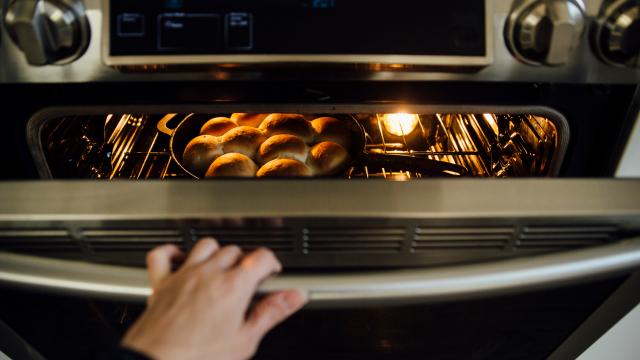Have you ever put bread or cake in your oven, only for it to come out burnt on one side and pale on the other? Or just came out way over/under cooked despite following the recipe perfectly? It’s probably not your fault, and is just because ovens are fickle boxes of mystery and burning.
If you have an older oven, there’s a good chance the temperature dial is less a precise measurement, and more an aspirational goal. This is because the temperature sensor in older ovens were more of a guesstimation, or only measured the temperature in one particular wall of the oven, and not the actual cooking area. As the oven got older, and the temperature sensor started to burn out, so did the heating elements in the other parts of your oven. So while the right wall of the oven might be a perfect 180 degrees, the left wall might be 50 or 300, because it’s all based on whether the element closest to the temperature sensor needs more or less power to reach the desired heat. Or it could be that the temperature sensor just isn’t calibrated correctly, which is an easier fix.
Maybe the temperature sensor has just died. I have a neighbour whose older fancy oven had that problem, and even on the lowest temperature setting the oven would be hot enough to crisp a pizza. It could also be that the fan has died, which you can tell if it’s much, much louder than usual, or super quiet and (if you can see it) not moving or moving very slowly.
There are a couple of ways around this, particularly if it’s not the fan:
- You can get a good oven thermometer. As long as the oven is able to regulate the temperature up and down, you can use the oven thermometer as a guide and just use the temp dial as a “higher/lower” Price Is Right kind of deal. This should give you an extra few years out of your oven, or at least give you final confirmation that your oven is toast. You can also move it around inside the oven to see where the good and bad spots are and work out a rotation schedule for food.
- You can call a repair person to come and replace the temperature sensor, fan and/or heating elements. It might be worth calling up the manufacturer beforehand to make sure they still make parts for that model, and see if they have any repair people in your area that they recommend. Depending on your brand and model this could cost anywhere between $100-$2500 including parts and labour, so it’s worth getting a quote and figuring out just how much you love your current oven.
- If you’ve tried both those things, or you’ve realised that your oven is beyond saving, the time might have come to send it to that great kitchen in the sky and buy one of the shiny new models. Some of the current generation ovens even have LCD screens that give you the current exact internal temperature. Just keep in mind that the fancier the computer in the appliance, the more expensive it will be to repair when it also succumbs to age and heat.

Leave a Reply
You must be logged in to post a comment.